
Soul Edge is a fighting game developed by the Namco team Project Soul and published by Namco as the first installment in the Soulcalibur series of 3D fighting games. Introduced at the JAMMA trade show in November 1995, the full arcade game was released in early 1996, while later in December an upgraded and expanded version of the game was ported to the PlayStation. The PlayStation version was renamed Soul Blade in North America, Europe, and Australia.

Ehrgeiz, fully titled Ehrgeiz: God Bless the Ring, is a 3D fighting video game developed by DreamFactory and published by Namco in 1998 for the arcade platform. It was first ported to the PlayStation and published by Square Co. in 1998, then to Japan's PlayStation Network by Square Enix in 2008.

Tomorrow Never Dies is a 1999 third-person shooter stealth video game based on the 1997 James Bond film of the same name. It was developed by Black Ops Entertainment and co-published by Electronic Arts and MGM Interactive for the PlayStation.
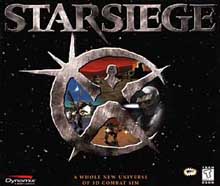
Starsiege is a mecha-style vehicle simulation game developed by Dynamix and released in 1999. Starsiege is set in the Metaltech/Earthsiege universe, which contains its predecessors Earthsiege (1994), Battledrome (1994), and Earthsiege 2 (1996). This universe also includes action game Hunter Hunted (1996), strategy games Mission Force: Cyberstorm (1996) and Cyberstorm 2: Corporate Wars (1998). It also includes the sequelsStarsiege: Tribes and all subsequent Tribes titles. In 2015, this game and the rest of the Metaltech/Tribes series were released as freeware by Hi-Rez Studios, but Battledrome and the Cyberstorm series were not.
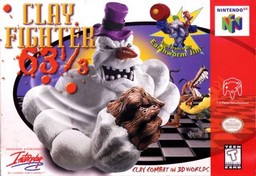
ClayFighter 63⅓ is a 1997 fighting game developed and published by Interplay Productions for the Nintendo 64. It is the third installment of the ClayFighter series. The title is a parody of the 64 suffix common with Nintendo 64 games.
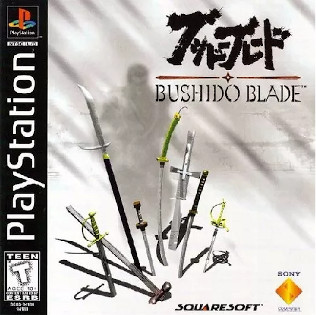
Bushido Blade is a 3D fighting video game developed by Lightweight and published by Square and Sony Computer Entertainment for the PlayStation. The game features one-on-one armed combat. Its name refers to the Japanese warrior code of honor bushidō.

Rune is an action-adventure video game developed by Human Head Studios which was released in 2000. The game is based on Ragnarok, showing the conflict between the Gods Odin and Loki and the buildup to Ragnarok. Built on the Unreal Engine, the game casts the player as Ragnar, a young Viking warrior whose mettle is tested when Loki and his evil allies plot to destroy the world and bring about Ragnarok.
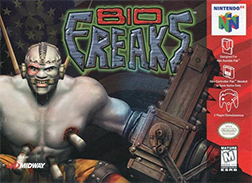
Bio F.R.E.A.K.S. is a 3D fighting video game released by Midway in 1998. It was originally planned for arcades. Prototypes of the game were tested at arcades, but the final arcade release was canceled and the game was later released for the PlayStation, Nintendo 64 and Microsoft Windows.

Nightmare Creatures is a 1997 survival horror video game developed by Kalisto Entertainment for PlayStation, Microsoft Windows and Nintendo 64. A sequel, Nightmare Creatures II, was released three years later. A mobile phone version of Nightmare Creatures was developed and published by Gameloft in 2003. A second sequel, Nightmare Creatures III: Angel of Darkness, was cancelled in 2004.

Drakan: Order of the Flame is an action-adventure video game developed by Surreal Software and published by Psygnosis in 1999. The game follows Rynn, a young woman with extraordinary martial skills, and an ancient dragon Arokh on their quest to free Rynn's younger brother from the evil sorcerer Navaros. The gameplay alternates between dungeon exploration and hack and slash when Rynn is alone and aerial dogfights when she mounts Arokh. A sequel, Drakan: The Ancients' Gates, was released in 2002.
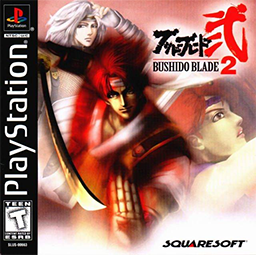
Bushido Blade 2 is a fighting video game published by Square, released in Japan and North America in 1998. It is the sequel to Bushido Blade, which had been released the previous year. The game was re-released in 2008 for PlayStation Network.

Duke Nukem: Time to Kill is a third-person shooter video game developed by n-Space and published by GT Interactive for the PlayStation.

Rogue Trip: Vacation 2012, also known as Rogue Trip, is a vehicular combat video game developed by SingleTrac and published by GT Interactive for the PlayStation in 1998. The game is set in an apocalyptic fiction alternative history version of the year 2012 where mercenaries fight against each other using vehicles, and various weapons as they pick up tourists, hitchhikers, and passengers paying them fares for bringing them to vacation destinations around the remnants of the destroyed United States, and these mercenaries call themselves "auto mercenaries".

Flesh Feast is a 3D action horror game released on May 20, 1998 by SegaSoft. Flesh Feast was designed primarily for multiplayer gameplay on SegaSoft's Heat.net network.
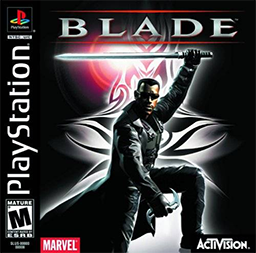
Blade is an action game based on the 1998 film Blade. It was developed by HammerHead for the PlayStation in 2000, and by HAL Laboratory and Avit Inc. for the Game Boy Color. The game was published by Activision and serves as a prequel to the movie, following the adventure of Blade with help of his mentor and friend Abraham Whistler. Reviews were mixed, with criticism of the graphics, camera, controls, and voice acting.

Gorky 17 is a turn-based tactics tactical role-playing video game developed by Polish studio Metropolis Software and published by Monolith Productions for Microsoft Windows in 1999. The game was later ported to Linux by Hyperion Entertainment and published by Linux Game Publishing in 2006. The AmigaOS 4 version was released in 2015.

Psybadek is a video game for the PlayStation console. It was designed and released by Psygnosis on November 17, 1998. The game was sponsored by shoe company Vans.

Draconus: Cult of the Wyrm, known in Europe as Dragon's Blood, is a hack and slash video game developed by Treyarch and published by Crave Entertainment for the Dreamcast game console. Draconus is considered as a spiritual sequel to Treyarch's swordfighting PC game Die by the Sword.

Ninja: Shadow of Darkness is an action beat 'em up platform video game developed by Core Design and published by Eidos Interactive for the PlayStation. The story follows a warrior named Kurosawa, who is tasked of ridding Feudal Japan of an unspeakable evil.

Deadliest Warrior: The Game is a fighting game developed by Pipeworks Software and published by 345 Games. Based on the Spike documentary TV series Deadliest Warrior, the game allows players to take control of various warriors from different time periods, utilizing their own unique set of weapons, armor, and fight styles. It was first released as a downloadable title for the Xbox 360's Xbox Live Arcade on July 14, 2010 and later for the PlayStation 3's PlayStation Network on October 5, 2010.



















